
The 363rd Intelligence, Surveillance, and Reconnaissance Group is a United States Air Force unit stationed at Joint Base Langley-Eustis. It is assigned to the 363rd Intelligence, Surveillance and Reconnaissance Wing. It was activated in February 2015, after having been returned to regular service after operating as a provisional unit. The group has its origins in the 363rd Fighter Group, activated on 1 August 1943 at Hamilton Field, California. The unit was credited with 41 victories but lost 43 of its own aircraft during World War II.

The 26th Information Operations Wing is an inactive United States Air Force unit. Its last assignment was with United States Air Forces in Europe at Ramstein Air Base, Germany, where it was inactivated on 5 July 2006.

The 20th Intelligence Squadron is a United States Air Force unit, assigned to the 363d Intelligence, Surveillance, and Reconnaissance Group at Offutt Air Force Base, Nebraska. It has served at Offutt since June 1992, when it was activated as the 20th Air Intelligence Squadron.

The 815th Airlift Squadron is a flying unit of the United States Air Force assigned to the Air Force Reserve Command and part of the 403d Wing at Keesler Air Force Base, Mississippi. It operates Lockheed C-130J Hercules aircraft providing global airlift.

The United States Air Force's 9th Combat Operations Squadron is an Air Force Reserve Command space operations unit located at Vandenberg Space Force Base, California. The 9th augments the 614th Air and Space Operations Center in operating the Joint Space Operations Center, performing combat operations, plans, strategy and intelligence assessments that enable the Commander, Joint Functional Component Command for Space to command and control space forces by providing worldwide space effects and theater support to combatant commanders.

The 14th Fighter Squadron is part of the 35th Fighter Wing at Misawa Air Base, Japan. It operates the F-16 Fighting Falcon aircraft conducting Wild Weasel missions. The squadron has been stationed at Misawa since 1987.
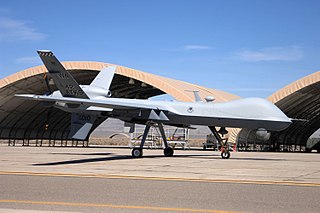
The 432nd Wing is a United States Air Force unit assigned to Air Combat Command at Creech Air Force Base near Indian Springs, Nevada. It flies General Atomics MQ-9 Reaper and RQ-170 Sentinel Unmanned aerial vehicles.
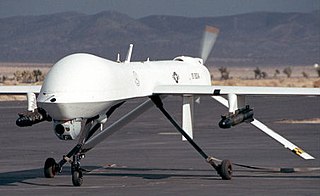
The 18th Attack Squadron is a squadron of the United States Air Force. It is assigned to the 432d Operations Group, and has been stationed at Creech Air Force Base, Nevada since 2009. The squadron conducts strike, intelligence, surveillance and reconnaissance missions, operating the General Atomics MQ-1 Predator unmanned aerial vehicle.
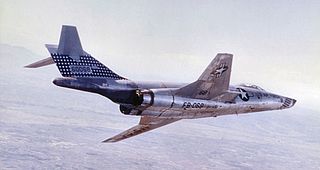
The 837th Air Division is an inactive United States Air Force organization. Its last assignment was with Tactical Air Command's Ninth Air Force at Shaw Air Force Base, South Carolina where it was inactivated on 1 February 1963.

The 32d Intelligence Squadron is a unit of the United States Air Force 707th Intelligence, Surveillance and Reconnaissance Group located at Fort George G. Meade, Maryland.

The 38th Tactical Reconnaissance Squadron is an inactive unit of the United States Air Force. Its last assignment was with the 26th Tactical Reconnaissance Wing, stationed at Zweibrücken Air Base, Germany. The squadron deployed to Incirlik Air Base Turkey during Operation DESERT STORM and flew combat operations while assigned to the 7440th Combat Wing. It returned to Zweibrucken after the war and deactivated 3 weeks later.

The 66th Air Base Group is a non-flying United States Air Force unit assigned to the Air Force Materiel Command Electronic Systems Center. It is stationed at Hanscom Air Force Base, Massachusetts. The group is also the host unit at Hanscom Air Force Base.
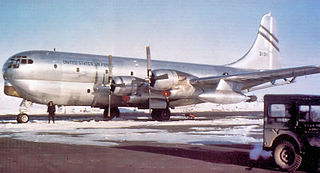
The 320th Air Refueling Squadron is an inactive United States Air Force unit. It was last assigned to the 22d Bombardment Wing at March AFB, California, where it was inactivated on 15 September 1962.

The 21st Expeditionary Reconnaissance Squadron is a provisional United States Air Force unit, assigned to United States Air Forces Europe to activate or inactivate as needed. Its last known location was at Souda Bay, Greece.

Sembach Kaserne is a United States Army post in Donnersbergkreis, Germany, near Kaiserslautern, and is about 19 miles (30 km) east of Ramstein Air Base. Prior to 2010, the installation was a United States Air Force installation and prior to 1995 it was a U.S. military airfield known as Sembach Air Base.

The 303rd Tactical Reconnaissance Squadron is an inactive United States Air Force unit. It was last assigned to the 66th Tactical Reconnaissance Wing and stationed at Laon-Couvron Air Base, France. The squadron was first activated in January 1953 at Shaw Air Force Base, South Carolina, moving to Europe in July. The squadron performed reconnaissance missions for North Atlantic Treaty Organization from bases in Germany and France until it was inactivated in 1959 and replaced by a squadron flying more advanced aircraft.

The 302nd Tactical Missile Squadron is an inactive United States Air Force unit. Its last assignment was with the 487th Tactical Missile Wing at Comiso Air Station, Italy, where it was inactivated in 1991 with the implementation of the Intermediate Range Nuclear Forces Treaty.

The 320th Troop Carrier Squadron is an inactive United States Air Force unit. It was activated on 17 December 1944, and inactivated on 19 August 1946 at Roswell Army Air Field, New Mexico. The squadron was later consolidated with the 302d Transport Squadron and 302d Tactical Reconnaissance Squadron. The squadron was a support squadron for the 509th Composite Group during World War II. It was formed as the transport unit for the 509th, and due to the highly secret nature of the group, carried all supplies and equipment for Project Silverplate Atomic Bomb activities. It also functioned as a special air transport squadron for high-ranking officers, nuclear scientists and for the group's commander, Lt. Col. Paul Tibbets to meetings concerning Silverplate. The squadron later served as a transport squadron for atomic tests in the Marshall Islands in 1946.

The 516th Aeronautical Systems Group is an inactive group of the United States Air Force (USAF). It was last assigned to the 516th Aeronautical Systems Wing of Air Force Materiel Command at Wright-Patterson Air Force Base, Ohio.
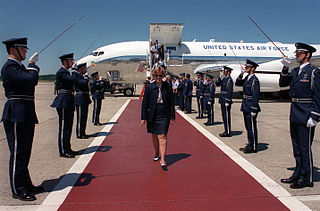
The 66th Air Base Wing is an inactive United States Air Force wing that was last active in September 2010 at Hanscom Air Force Base, Massachusetts, where it had served as the host organization since 1994. It was replaced at Hanscom by the smaller 66th Air Base Group.
























